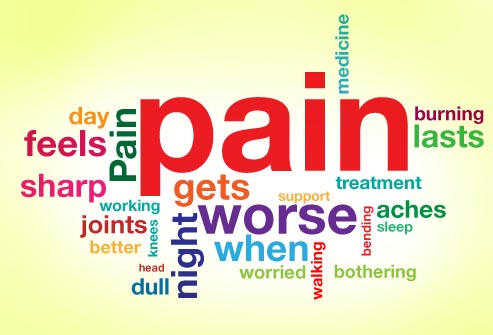
Diagnosed with Cancer? Your two greatest challenges are understanding cancer and understanding possible side effects from chemo and radiation. Knowledge is Power!
Learn about conventional, complementary, and integrative therapies.
Dealing with treatment side effects? Learn about evidence-based therapies to alleviate your symptoms.
Click the orange button to the right to learn more.
- You are here:
- Home »
- Blog »
- side effects ID and prevention »
- Managing My Non-Cancer Pain
Managing My Non-Cancer Pain

Managing non-cancer pain is a day-to-day endeavor. Its treatment exerts a heavy toll on the body, leaving permanent reminders of their presence. The toll can be both physical and psychological…
“Non-cancer pain” is pain that is caused by cancer therapies aka chemo, radiation and/or surgery but not by the cancer itself.
My experience is that if you’ve had chemotherapy, radiation, and/or surgery for a diagnosis of cancer, any cancer, you are going to live with pain as a long-term side effect. It is not a question of “if.” It is a question of “how much.” While the study linked and excerpted below puts the percentage of cancer survivors experiencing pain at 60%, I have to respectfully disagree.
Like my post talking about both chemo and radiation-induced nerve damage, I believe that ALL cancer survivors endure some pain. The issue is if the survivor chooses to complain about it enough to be included in the survivor statistics.
Like nerve damage, in my experience, pain in cancer survivors increases with age.
Conventional oncology simply hasn’t identified much relief for non-cancer pain experienced by cancer survivors. The pain article creatively articulates expressions for how little oncology offers the cancer survivor.
- “Poorly managed pain significantly contributes to a decreased quality of life in cancer survivors…”
- “…pain due to late radiation toxicity are both similarly benighted by a paucity of research into their effective treatment.”
- “…series of small studies of anti-neuropathic agents…have proved inconclusive…”
- “The prognosis for patients with radiation-induced BPN (RIBPN), however, remains poor..”
- “There are limited drug treatments for CIPN…”
The point of this post then, is my attempt to address my mantra “I wish I knew then what I know now…”
What types of pain do long-term cancer survivors experience?
The bottom line, for me anyway, is to practice evidence-based but non-conventional therapies, daily, weekly, etc. Including:
- acupunture
- moderate exercise
- deep breathing
- CBD oil
- sleep
etc.
This post’s focus is on non-cancer pain. However, I have to toss out the idea that cancer survivors would experience less non-cancer pain if conventional oncology would use less toxicity- chemo and radiation- and figure out that “less is more” as the saying goes.
Are you a cancer survivor struggling with non-cancer pain? Have you been diagnosed with cancer and are stewing about the long-term side effects that may result from your cancer therapies?
If you’d like to learn more about evidence-based but non-conventional therapies send me an email at
David.PeopleBeatingCancer@gmail.com
Hang in there,
David Emerson
- Cancer Survivor
- Cancer Coach
- Director PeopleBeatingCancer
Recommended Reading:
Pain in cancer survivors
“Cancer and its treatment exert a heavy psychological and physical toll. Of the myriad symptoms which result, pain is common, encountered in between 30% and 60% of cancer survivors...
Pain in cancer survivors is a major and growing problem, impeding the recovery and rehabilitation of patients who have beaten cancer and negatively impacting on cancer patients’ quality of life, work prospects and mental health. Persistent pain in cancer survivors remains challenging to treat successfully. Pain can arise both due to the underlying disease and the various treatments the patient has been subjected to.
- chemotherapy causes painful chemotherapy-induced peripheral neuropathy (CIPN),
- radiotherapy can produce late effect radiation toxicity and
- surgery may lead to the development of persistent post-surgical pain syndromes…
Conclusion-Our continually ageing and expanding population coupled with increases in the number of patients being successfully treated for cancer is resulting in greater numbers of cancer survivors. Many of these survivors experience the after effects of both their malignancy and the treatment they receive for it. Pain represents one of the most common and unpleasant of these after effects, profoundly influencing the quality of life experienced by cancer survivors and detrimentally affecting their recovery and rehabilitation.
Pain in cancer survivors may be caused by a number of disparate mechanisms related to both the underlying disease and the differing modalities used to treat it;
- surgery,
- radiotherapy and
- chemotherapy
- or a combination of all three.
Our understanding of the exact pathophysiological processes which result in pain remains sparse, but ongoing work is likely to lead to improved appreciation and treatment possibilities to reduce the symptom burden for cancer survivors.”

